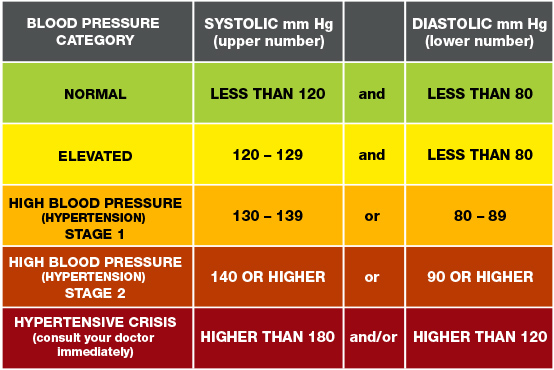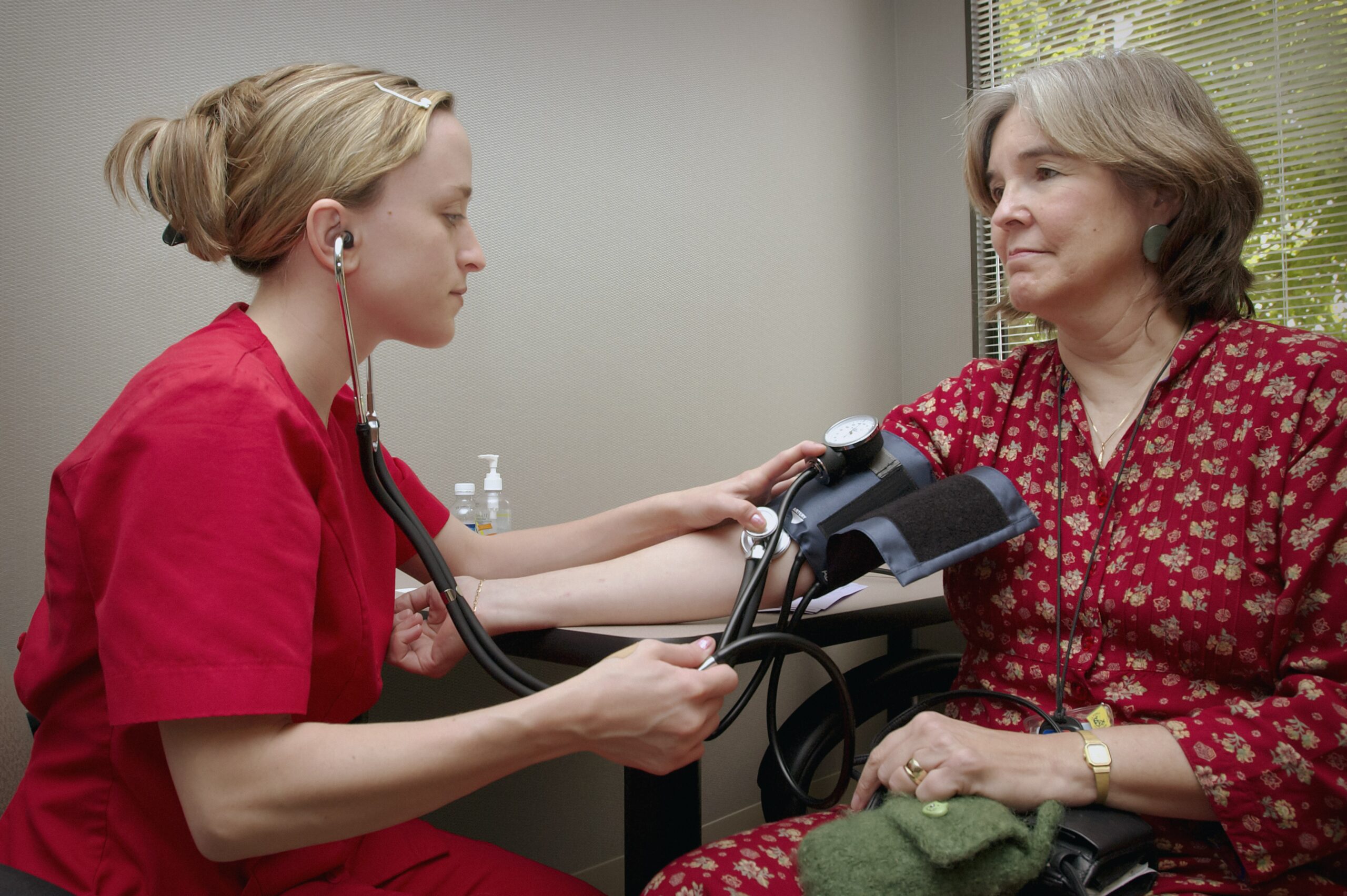High blood pressure (BP), usually referred to as “hypertension,” is the most well-known primary medical disease in the United States.

In the presence of hypertension, myocardial infarction, chronic renal disease, stroke, and vascular disease are all significantly more likely. In the United States, it affects around 86 million people who are 20 or older. Adult cases of primary hypertension make up 90% of all cases, while secondary occurrences make up 10%.
What is the definition of hypertension?
Blood pressure is the force the blood exerts on the inner wall of the arteries while the heart is contracting (systolic) and when the heart is relaxing (diastolic). Understanding blood pressure readings is crucial to understanding hypertension.
A ratio of two numbers, one over the other, is used to record blood pressure data. For instance, normal blood pressure readings are less than 120 over 80 millimeters of mercury.

The systolic pressure, in this case 120, is the highest figure and represents the pressure in the arteries as the heart contracts.
Diastolic pressure, in this case, 80, is the lowest figure and represents the pressure in the arteries while the heart is at rest.
When your blood pressure, or the impact of your blood shooting against the walls of your blood vessels, is continuously too high (above 120/80), establish the diagnosis of high blood pressure (HBP) or hypertension.
Types of hypertension
- Primay or essential hypertension
Primary hypertension, also called idiopathic or essential hypertension, is a form of high blood pressure for which there is no known cause, despite extensive research over the previous decades. Since it typically takes place gradually, most patients don’t exhibit symptoms until much later.
- Secondary hypertension
As the name suggests, secondary hypertension results from an underlying medical condition like thyroid issues, kidney disease, or obstructive sleep apnea. It can also be brought on by some prescription pharmaceuticals and illegal substances. It typically manifests quickly and causes higher pressure measurements than rimary hypertension does.
What is the cause of high blood pressure?
Although the precise causes of high blood pressure are unknown, a number of factors, such as genetics, persistent stress, a poor diet, inactivity, and obesity, may all be contributing factors.
Secondary hypertension, on the other hand, is caused by general medical conditions such as kidney disease, pregnancy, an overactive thyroid, and hyperaldosteronism.
- Genetic or inheritance factors
- Because high blood pressure runs in families, genetic or inheritance factors appear to play a role in its development. Individuals whose parents have hypertension are more likely to endure the condition, significantly if both parents are affected. The inheritance pattern, however, is unknown.
- Chronic stress
- Researchers are looking into how chronic stress affects people in various contexts, including work-related stress, relationship stress, poor socioeconomic status (SES), and, more recently, discrimination based on race. There have been reports of associations between each of these and outcomes related to blood pressure. However, the quality of the evidence varies, and there are still many questions about the underlying mechanisms, vulnerability, and protective factors that may be crucial in determining how chronic stress affects hypertension.
- Diet and Hypertension
- An unhealthy or deficient diet has been connected to numerous incidences of hypertension.
- Foods that are heavy in fat, cholesterol, and calories are bad for your overall health. They may cause the blood vessel walls to accumulate fatty plaque, which makes the arteries narrow and makes it more difficult for the heart to pump enough blood to your extremities. In turn, this raises the pressure exerted on the artery walls, potentially injuring or rupturing them.

- Furthermore, your body retains fluid when it consumes too much salt (sodium), and the added volume raises your blood pressure. You should avoid processed foods because they frequently contain excessive levels of salt, sometimes more than a day’s worth in a single serving.
- Increase your consumption of whole grains, lean protein, and fresh fruits and vegetables.
- Inactivity
- The risk of hypertension increases with lack of exercise. Physical inactivity is bad for your health, whether it’s sitting at a desk at work, driving, watching TV, or using your phone. In actuality, sedentary behavior can increase your risk of hypertension by as much as 50%.
- Overweight and Obesity
- Hypertension can be brought on by obesity or made worse if you already have it.
- According to a 2020 assessment, 65 to 78 percentTrusted Source of instances of primary hypertension are believed to be caused by obesity.
- Having more fat tissue in the body might result in complicated alterations that work together to either cause or exacerbate hypertension.
- These alterations include:
- alterations in adipose-derived cytokines overactivation of the sympathetic nervous system stimulation of the renin-angiotensin-aldosterone (RAAS) system (hormones)
- insulin resistance alters the kidneys’ structure and function.
Preventing and managing HBP
Hypertension, often known as high blood pressure (HBP), is a silent “silent killer” that silently harms blood vessels and causes major health issues.
Although there is no cure, you can improve your quality of life and reduce your risk of developing heart disease, stroke, kidney disease, and other conditions by taking your medications as directed and changing your lifestyle.
Prevention is especially applicable in this situation. It’s advisable to stay away from high blood pressure entirely. Starting with healthy lifestyle choices is a terrific idea.You can manage and control your blood pressure with the proper care to help you live a longer and healthier life.




